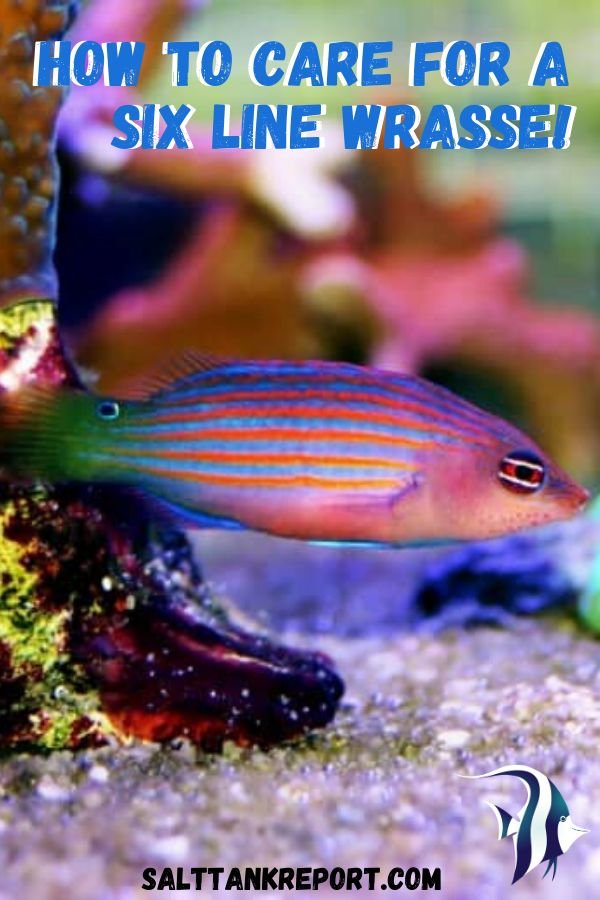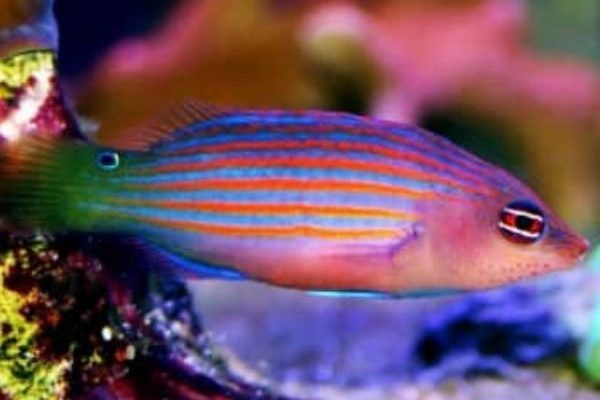
Wrasses are a diverse family of fish known for their vibrant colors and intriguing behaviors. They are often seen darting about the reef, making them a favorite among aquarists. However, these fish don’t just thrive anywhere; they need specific conditions and care to flourish in your tank. Let’s dive into the essentials of caring for these captivating creatures, making sure your underwater world is both beautiful and sustainable.
Understanding Wrasse Species
Before you start caring for a wrasse, it’s essential to know which species you’re dealing with. Wrasses come in various shapes and sizes, each with distinct characteristics and care requirements. For instance, the Yellow Wrasse is known for its bright yellow hue and calming demeanor, while the Six-Line Wrasse is a bit more boisterous, showcasing a dazzling mix of blue and green stripes.
Here are a few popular types of wrasses to consider:
- Six-Line Wrasse (Pseudocheilinus hexataenia): Great for pest control but needs space to swim.
- Melanurus Wrasse (Halichoeres melanurus): Known for its stunning colors and a knack for sifting through sand.
- Cleaner Wrasse (Labroides dimidiatus): Famous for cleaning parasites off other fish, but can be challenging to keep in captivity.
Knowing the specific traits of your chosen wrasse will help you create the right environment. For instance, some wrasses thrive in pairs, while others prefer solitude. Do a little research on your particular wrasse; it’s the first step toward ensuring a happy aquatic life.
Setting Up the Perfect Aquarium Environment
Creating a suitable environment for your wrasse is like crafting a cozy nook in your home. Start with a tank that’s at least 50 gallons if you’re getting a medium-sized wrasse. Smaller tanks can cause stress and territorial disputes. Wrasses are active swimmers, and they need room to roam.
The substrate is also important. Many wrasses love to burrow, so consider adding a sandy bottom to mimic their natural habitat. Along with sand, provide plenty of live rock for hiding spots. Not only does this offer them security, but it also encourages natural grazing behaviors, which keeps your wrasse engaged and healthy.
Another key factor is water quality. Keep the temperature between 72-78°F and maintain a salinity level of 1.020–1.025. Regular water changes (around 10-15% each week) help keep the environment stable, ensuring your wrasse experiences minimal stress.
Feeding Your Wrasse
Feeding a wrasse is like trying to please a fussy eater at dinner—everyone has their preferences! Most wrasses are carnivorous and enjoy live or frozen food. Foods like brine shrimp, mysis shrimp, and even high-quality pellets work well. Offer a variety to keep them interested and ensure they’re getting the nutrition they need.
Wrasses also love to graze, so incorporating some marine algae or spirulina into their diet can be beneficial. Think of it as the healthy side dish to their main course! Offer food at least once or twice a day, depending on the species and size of your wrasse.
It’s crucial to avoid overfeeding, which can lead to poor water quality and health problems. Watching their feeding habits will give you insight into whether they’re satisfied or if you need to adjust their portions.
Compatibility with Other Fish
If you’re planning to keep your wrasse with other fish, compatibility becomes a hot topic. Imagine mixing different personalities at a party—some will get along great, while others could clash. Wrasses can be territorial, especially males, so it’s important to choose tank mates wisely.
Generally, peaceful community fish like clownfish, cardinals, and damsels can coexist well with wrasses. However, avoid pairing them with overly aggressive species that might stress them out. It’s always smart to introduce your wrasse first, giving them a chance to establish territory before adding other fish.
Monitor interactions closely in the early days. If you notice signs of aggression, such as chasing or fin nipping, you may need to separate them. A harmonious aquarium is key to maintaining a healthy environment.
Maintaining Water Quality
Keeping the water clean and healthy is akin to maintaining a pleasant home atmosphere. Regularly test the water quality to ensure parameters are within the ideal range. This includes checking levels of ammonia, nitrite, and nitrate. Ideally, ammonia and nitrite should read zero, and nitrates should be kept under 20 parts per million.
Investing in a good quality filter is crucial. A strong filter helps keep the water crystal clear and free from debris, which is especially important for wrasses that can be sensitive to poor water conditions.
Don’t forget about aeration! Wrasses thrive in well-oxygenated water, so adding a decent air pump or a water movement device can make a big difference. This will keep your fish active and comfortable.
Handling Health Issues
Even with the best care, health issues can arise. It’s part of being a responsible fish owner—like having to deal with unexpected guests at your party. Common problems for wrasses include ich (a white spot disease) or parasitic infections. If you notice your fish scratching against objects or showing unusual behavior, it might be time to step in.
Using a quarantine tank for new arrivals helps prevent diseases from spreading. If you suspect illness, consider medicating your wrasse in the quarantine tank instead of in the main display. Always consult a reliable source for treatments, ensuring you choose options that won’t harm your live rock or invertebrates.
Regular observation is vital. Spotting signs early can mean the difference between a simple fix and a more severe problem.
Enjoying Your Wrasse’s Behavior
One of the best parts of having a wrasse is watching them display their unique behaviors. Their active swimming, burrowing, and occasional cleaning of other fish can bring your aquarium to life. It’s like having a colorful, lively performance right in your living room!
Spend time observing their interactions with their environment and with you. Some wrasses become quite curious about their owners, often swimming to the front when you approach. This connection can be rewarding and enhance your overall experience as an aquarium enthusiast.
Engaging with your wrasse through feeding and interaction is essential. The more you understand their behavior, the better you can care for them. Plus, it’s just plain fun to watch!
Final Thoughts on Wrasse Care
Caring for a wrasse in a saltwater aquarium can be a fulfilling journey filled with learning and joy. By understanding their specific needs, creating a suitable environment, and being attentive to their health, you’ll create a thriving habitat. Remember, every wrasse has a unique personality—catering to that will make your aquarium a lively, vibrant space.
So, as you embark on this adventure, keep an open mind and enjoy the process. With patience and dedication, your wrasse will not only survive but thrive, bringing color and life to your salty world. Happy fishkeeping!

